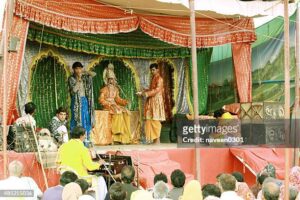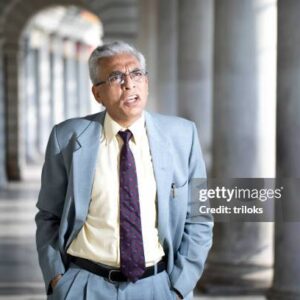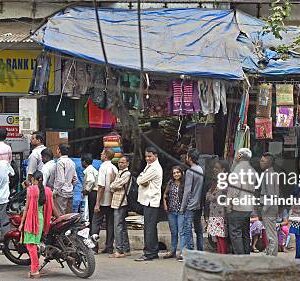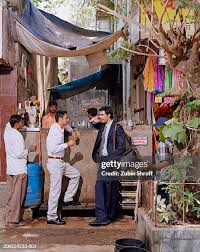The tradition of street show or corner play is centuries old in India. Its description is found in the middle age periodicals of Andhra province of Southern India, as “Veethee Natakam.” A Sanskrit/Hindi term, here Veethee stands for path or road and Natakam for play. In Hindi belt, a widely accepted term for this is “Nukkad Natak”. There in Andhra, it was widely acknowledged as an art. Otherwise also, from time immemorial, the concept of “street show or corner play” has been extant in every culture of the World, in this or that form.`
Cursory past of Corner play
The present time’s stagecraft too is an evolvement of old customary street show as an outcome. An all time adopted theory of street show explains, in primitive days, after day long tiring business, at the evening people used to gather at some place. There squatting in a circle, when preparing food in the middle of the circle, they happen to enjoy by singing and dancing. This was less or more an observance in all cultures. Still in Indian villages the same custom with refinement prevails in the name of Chaupal.
Meant, meeting at some square or yard of house, in open space generally at evening time. There, villagers gather and discuss all sorts of matters with amusement with intent to relax the mood. In ancient times, the theme of street shows were religious one. Be it West, where the stories from Bibles were adopted, whereas, in India the stories were taken from Ramayana and Mahabharata. In West, these shows were arranged in day time. Whilst in India, these shows were organized in evening time. This concept of evening time play, too attributed a good deal in the art of light co-ordination, on stagecraft in India.
In Indian context

Though it was not a fixed rule in India that such plays were too be held in evening time only. So many, other formats of these “street show or corner play” existed in the history of the Indian street play. When, we travel back to the middle age of our social history. We find so many renowned saints and seer, such as saint kabir das, Tulsi das. Raidas. Surdas, Meerabai etc in Northern Indian belt. Likewise, Chaitanya Mahapraabhu in Bengal, saint Ekeshwera and many others in rest part of the India we find.
They all in their reclusive life, kept on working on their social awakening drive, as wanderers in small groups. Mostly, chanting couplets, psalms and prayers in worship of god, as well as, spreading messages in singing form, against the prevailing evils in the society. The name of saint Kabir is on the top of this list. He candidly and satirically pinpointed evils of the social system in his couplets.
Their contribution as pioneers of “street show” in India is worth noticed as such. The same form of street show helped political and social leaders, during the struggle of Indian Independence movement in awakening of people at large. This was done, by organizing Prabhat pheri (morning perambulation in disciplined row, in which all members singing patriotic songs), as an influencer.
Some glimpse of West
The proper format of “street show or corner play” remained alive in India, in other shapes which still survives. Before coming to that point, it would be better to mention something about “promenade concert” of the Western World. Since, that form of display of art is, also somewhat akin to “street show,” and is in semblance of Indian spectrum of street show or Corner play . In both kinds of shows, the audience has to watch the show in standing position or strolling side by side.
The promenade concert had its origin from 18th centuries onward. Such concerts basically focused on musical performance. At the beginning ‘concert’ was given the name “band stand,” and later on “orchestra.” Still the vestiges of the “band stand,” as the relics of British Empire are visible in some Hill stations of Shimla, Mussoorie and Nainital of India. Where for some years to come, after Independence, the ceremonial musical shows were regularly run by the local administration. Though, later on such shows were closed.
The ” promenade concert” often organized at some sea beach or at the bank of some river, with garden or park. Thus one common feature of “street show and promenade concert” was, audience watched the program standing by the side of the show. With a difference that “promenade concert” were held, inside some building having a roof. While, audiences watching it, standing in the open air. Meanwhile “street show” was altogether performed and watched in open space.
Indian traditional night plays
Now back to the another format of “street show or corner play” in Indian context. That format still survives as,”traditional organizing of play, after harvest in villages.” In that way, it has some semblance with Western Promenade Concert. Here in India, the customary ceremonial display of performances of saga of Lord Rama by the name of “Ramleela,” and saga of Lord Krishna as an inclusive part of great epic “Mahabharata” is in trend. Both these ‘plays’ often performed at night ,with proper arrangements and coordination of light effects.
Another significant facet of these plays is that these are lyric and music based. The ‘play’ dramatized with assistance of traditional musical instruments under the supervision and guidance of local Mastereo. This gala runs continuously for days to come. The introduction of such plays were on purpose, by seer of the society. After the toil of harvest of season, pastoral community were free from encumbrances and having ample free time to enjoy such “saga.” The difference is here so that audiences watch the show by sitting on the ground. Now a days chairs are provided to the audience. On every night, the show lasts for hours; sometimes for whole night, why for sitting arrangement is must.
In the” promenade concert,” a small levy was taxed on the audience, entering the area of concert. Whilst there no such levy imposed upon audience in India, meant it is free of any charge. Though some of the audience offer gift in cash, to participant artists or management to exhort them.
Drama companies as moving theater
The another form of “street show” that got properly introduced and developed amply within a short time was, “movable theater show.” It was in the name of various “drama companies.” This culture of theater flourished in 19th and first half of 20th century in India. Every such company, had its own retinue. Company consisted of “play artists, musicians and technician etc,” with carts to carry them and other outfit. These drama companies happened to make halts at various remote areas, for days, as sojourn and display the show. For that they charged some “fee’ per head; so the drama company could bear its expenditure. But later on rapid development of cinema rooted up the drama company business.
Despite all this, the “street play” along with theatrical groups existed side by side and registered its presence vigorously. The factor to make it alive is, human nature that prefers to be communicated in person. Street show and theater provide the same sensation. Another factor is, artists can ably fulfill their aspiration of acting at a low cost. Further, in some probabilities his talent may be taken notice of, by some prominent cine director or producer. In the past on several occasions, such selective artists too have been provided the opportunity to shine on the silver screen. This happened because them being good performer, in some street show or theater group. Penned by- Vinay Pharasi…..



